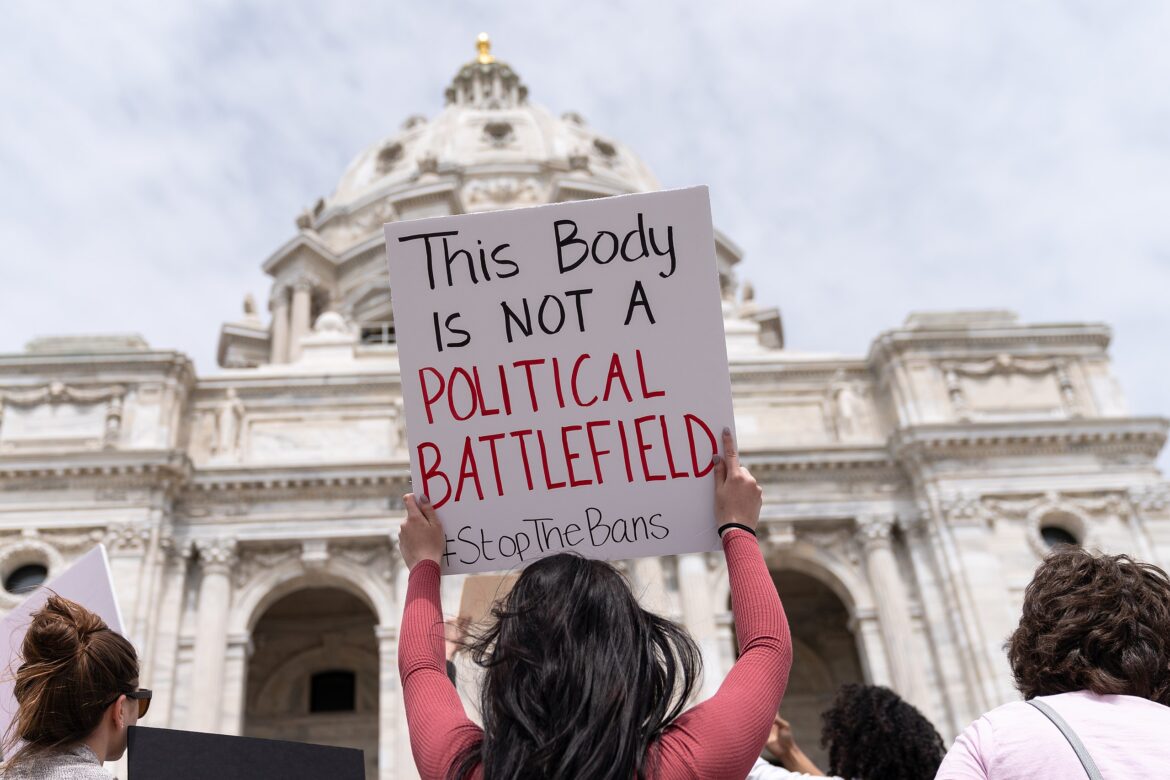Following the overturn of the landmark 1973 Supreme Court decision in Roe v. Wade, which previously granted women across the United States the constitutional right to safely access abortion services, the country is facing a crisis. In the past months, a series of laws further restricting abortion access have been implemented across states. Promoted by numerous politicians and religious groups, these laws impose limitations on reproductive rights and aim to stigmatize and shame individuals who have the ability to conceive and bear children. These laws include arbitrary time limits on the performance of abortions, mandatory waiting periods, and strict requirements for medical counseling. Indeed, the effects of the overturn of Roe v. Wade are wide-ranging. Many states face court battles to block the Supreme Court’s decision resulting in a chaotic legal landscape. Individuals seeking abortions are no longer able to access them safely and legally, which leads many to turn towards less safe options and ‘back-alley’ abortions, putting their lives at risk.
Increasingly, individuals seeking abortions and health professionals tending to them are at risk of harm. Some states, such as Texas and Oklahoma, have recently put in place draconian laws completely banning access to abortion with little to no space for exceptions. This caused shockwaves across the country since the extent of these policies represents a clear infringement of human rights, putting the lives of many individuals at risk. Numerous reproductive rights advocates and healthcare providers have publicly opposed these new policies and argued that they restrict the autonomy of individuals and their right to access safe healthcare. Recently, a coalition of 196 human rights groups wrote a letter to the United Nations, urging them to take action against the abortion bans on the claims that they represent a violation of the U.S.’s obligations under international human rights law. The arguments presented in the letter reflect a new reality of women and all individuals able to bear children in the United States. The abortion bans restrict access to proper medical care, even in cases of ectopic pregnancies and miscarriages, despite the risks they cause to their lives. In the same vein, discussions intensified across social media platforms following the story of five women who filed a lawsuit against Texas over the state’s near-total abortion ban, which obstructed their access to proper obstetrics health care and put their lives at risk.
Because of the growing criminalization of abortion across the U.S., individuals seeking them and doctors providing abortions find themselves trapped in fear and intimidation. Increasingly, medical professionals are reluctant to provide any sort of healthcare counseling or treatment to pregnant women because of the risk it implies for them. This is the case in Idaho, where a hospital has recently discontinued its obstetrics unit due to the political climate of the state. Since doctors are increasingly at risk of facing criminal prosecution or civil litigation for providing certain medical care procedures to pregnant individuals, physicians are less willing to take such work positions. The vaguely worded laws regarding procedures for high-risk patients put them at risk of fatal complications and risk the position of many doctors.
Currently, individuals without the means nor the desire to be parents or birth a child are forced into parenthood. This will drastically impact the levels of abandoned children, poverty levels, and crime rates. Additionally, the consequences of these ‘newly’ established bans disproportionately affect marginalized communities such as low-income women of colour. While issues related to these individuals’ access to healthcare existed prior to the application of abortion bans, the inequalities were exacerbated. It is important to consider that the extent of abortion bans is not limited to abortions but extends to healthcare counseling, access to contraception, receiving life-saving medical treatment, incarceration levels, and much more. This issue has been further complicated by the notion of ‘fetal personhood,’ where an undeveloped unborn fetus is perceived and addressed as a person. This implies that pregnant individuals seeking abortions can be labeled as ‘murderers’ in some states. The value of a fetus is put on the level, and they are provided with similar, if not more, rights than the individual bearing them. This notion scares a lot of individuals since it appears as a part of a larger carceral system issue in the US and contributes to the widening net of criminalization post-Roe, ultimately pushing individuals to travel across states to access basic healthcare services.
The reality is that abortion bans and restrictions have been an issue across the world for decades, but the topic obtained immense media coverage only when the U.S. was affected. It is important to consider that the post-Roe effects perceived across the United States reflect the effects felt across other countries. The number of individuals affected is extensive, and abortion bans affect several international rights ranging from freedom of belief, anti-discrimination laws, reproductive rights, and bodily autonomy. This human crisis appears worldwide and must be addressed before more roadblocks, such as limited access to birth control, emerge.
Edited by Afreen Mithaiwalla
Hajar is a third-year student in International Development Studies and Political Science. She is a first-time writer and her areas of interest include the long-term effects of climate change on migration and international security issues.

